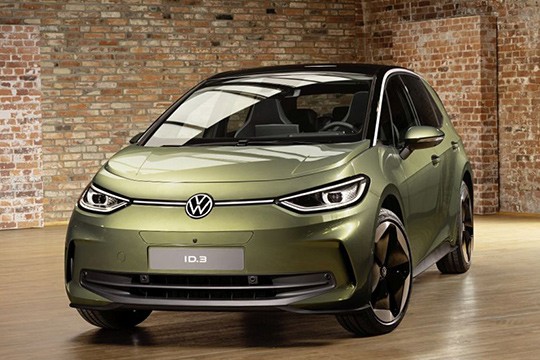VOLKSWAGEN ID.3 Models/Series Timeline, Specifications & Photos
First production year: 2020
Engines: Electric
Body style: Hatchback
Volkswagen brought a refreshed version of the ID.3 small-sized vehicle in 2023, more than three years after model's debut.
During these years, the world struggled with a pandemic and a big war on the European continent, but the German automaker had to move on. Its engineers worked hard to produce this facelifted version and to make the small-sized ID.3 more competitive on the market. Thus, apart from some aesthetic changes, it also featured a revised interior and a choice of two batteries.
The refreshed ID.3 sported a new front fascia with an enhanced lower bumper that enhanced the car's aerodynamics. Thus, on the sides, it featured two slats that diverted the air from the front of the vehicle to the sides, lowering drag resistance. Another significant upgrade was for the headlights, which were available with Matrix-LED technology and a standard main beam for the entire range.
Inside, Volkswagen created a cabin where 77% of the materials were recycled, thus lowering the car's carbon footprint. There was also an augmented reality (AR) head-up display that helped the driver navigate the road and showed important information. Another significant step forward was the introduction of the V2X technology that gathered data from other Volkswagen vehicles or infrastructure to warn the driver about potential hazards on the road.
The MEB platform used by the ID.3 featured the same 204 PS (201 hp) motor that drove the rear wheels from its predecessor. It was fed by either a 58 or a 77 kWh battery pack, which allowed the vehicle to travel 426 km (265 miles) or 546 km (340 miles), respectively.
Volkswagen launched the ID.3 in the Fall of 2019 at the Frankfurt Motor Show, thus revealing the first product based on the MEB platform, designed especially for electric vehicles.
While it wasn't the first full-electric vehicle built by the German automaker, the ID.3 didn't use an adapted platform, as was the case with the Golf EV or the e-UP! Moreover, the new base helped the automaker create a small-sized vehicle with a wheelbase suitable for a mid-size sedan.
The ID.3 represented a new beginning for the German brand, and it had to look different than the rest of its siblings. Its front fascia featured just a small grille on the lower side of the bumper, while the headlights sported a surrounding LED daytime running light signature. From its profile, the EV showed its short front side and the raked, wide windshield that started the shape of the arched roofline for the greenhouse. At the back, the raked-forward tailgate completed the image of this small-sized hatchback.
Inside, due to the 2.77 m (9.1 ft) long wheelbase, the automaker was able to create a spacious cabin. At the front, there was a pair of bolstered bucket seats separated by a tall center console that hosted cup holders and two other storage compartments, but no shifter. Fronting the driver was a trapezoidal LCD for the instrument panel, while atop the center stack, Volkswagen installed a second screen tilted toward the driver for the infotainment system. At the back, thanks to the flat floor, there was enough room for three passengers on the split-folding bench-seat.
Volkswagen installed the motor under the trunk's floor, in the back. That sent the 204 PS (201 hp) to the rear wheels and was fed by choice of three battery packs: a 45 kWh, a 58 kWh, and a 77 kWh, respectively.

